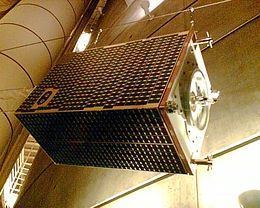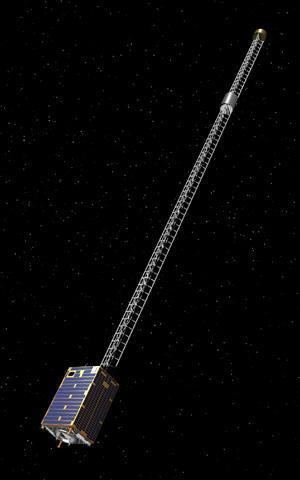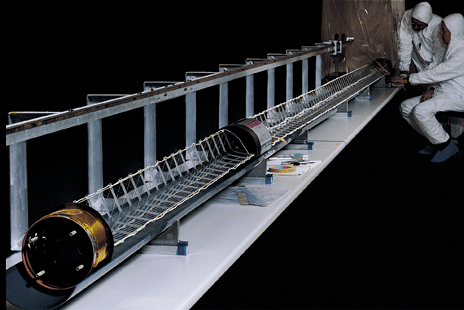SATCAT no. 25635 Inclination 96.4421° Period 1.7 hours Launch mass 61 kg | COSPAR ID 1999-008B Launch date 23 February 1999 Inclination 96.4421° Launch mass 61 kg | |
 | ||
Mission duration 18 years, 1 month and 10 days Similar Magsat, CHAMP, SUNSAT, Intasat, WRESAT | ||
Ørsted is Denmark's first satellite, named after Hans Christian Ørsted (1777–1851) a Danish physicist and professor at the University of Copenhagen. It is in an almost sun synchronous low Earth orbit.
Contents

After more than seventeen years in orbit, the Ørsted satellite is still operational, and continues to downlink accurate measurements of the Earth's magnetic field. Ørsted was constructed by a team of Danish space companies, of which CRI was prime contractor. CRI was acquired by Terma A/S before Ørsted was launched, and the daily operations are being run as a teamwork between Terma A/S and the Danish Meteorological Institute.

In 2010, Ørsted passed within 500 meters of debris from the 2009 satellite collision but suffered no damage.
Ørsted was the first in a planned sequence of microsatellites to be flown under the now discontinued Danish Small Satellite Programme.

Mission Objectives

The main scientific objective of the spacecraft was to map the Earth's magnetic field and collect data to determine the changes occurring in the field.

Based on data from the Ørsted satellite, researchers from Danish Space Research Institute concluded that the Earth's magnetic poles are moving, and that the speed with which they are moving has been increasing for the past few years. This apparent acceleration indicates, that the poles of the Earth might be in the process of switching around, which could have serious consequences for land-based biological life.

The results have been published in several prominent scientific journals, and graced the cover pages of Geophysical Research Letters, Nature, and Eos.
Instruments
The primary scientific instruments on the Ørsted satellite are:
- Overhauser magnetometer provides extremely accurate measurements of the strength of the magnetic field. The Overhauser magnetometer is situated at the end of an 8 meter long boom, in order to minimize disturbances from the satellite's electrical systems.
- CSC fluxgate vector magnetometer, used to measure the strength and direction of the magnetic field. The CSC magnetometer is situated somewhat closer to the satellite body in the so-called "gondola", together with the
- Star Imager, used to determine the orientation of both the satellite and the CSC magnetometer.
The other three instruments are located in the main body of the satellite:
- Charged Particle Detector, used to measure the flux of fast electrons, protons and alpha particles around the satellite.
- BlackJack GPS Receiver, developed by the NASA Jet Propulsion Laboratory and used to accurately determine the satellite's position; can also be used to monitor the atmospheric pressure, temperature and humidity profile on the path between Ørsted and GPS satellites through atmospheric occultation.
- Trimble TANS GPS Receiver, also used to determine the satellite's position as a backup to the BlackJack.
